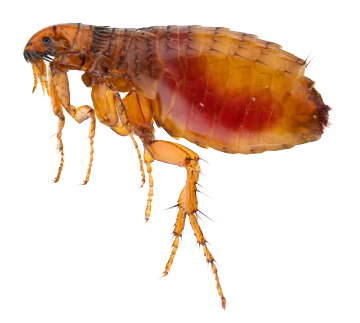James R. Speiser, DVM, DABVP, CCRT
May 29, 2015
How much do you know about fleas? You probably won’t believe how quickly (and how much) they reproduce! Here are some interesting facts that might surprise you:
- There are 4 stages to the flea life cycle. They include the egg, the larva, the pupa (cocoon), and the adult. Short of fire, or chemicals that would destroy the environment, the only stages that can be assaulted to control fleas are the larva and the adult stages. The egg and the pupa are very resistant to injury.
- From egg to adult, the entire flea life cycle can be as little as 14 days.
- Fleas bite dogs or cats, and eat blood. A female flea will consume up to 15 times her body weight in blood over her 3-week lifetime. Flea anemia can be fatal due to severe flea infestation.
- Fleas can carry and spread several diseases. They carry the immature tapeworm Dipylidium caninum, which is one of the most common tapeworms in the dog and cat.
- The pupa stage of the flea can remain dormant for up to 9 months depending on environmental conditions. Adult fleas emerge from the pupa when stimulated by vibrations or physical pressure and warmth. Once they emerge, they must eat within a couple of days, or they will die. That is why when people walk into a vacant home (that hasn’t had a pet living in it for months) and are suddenly “attacked” by an army of hungry fleas, it’s because they’ve been stimulated to emerge from the footsteps of the hosts walking through the house.
- A female flea will lay up to 40 eggs per day for about 3 weeks. That is 840 eggs. If half hatch and half are female, and if you do the math, you will discover that one flea can generate SEVERAL MILLION fleas in as short as 8 weeks. This swells to HUNDREDS OF MILLIONS over the next 8 weeks.
- Dog and cat fleas like dog and cat blood, and don’t prefer biting humans. If you are getting bit by fleas, it is likely that you have TOO MANY FLEAS in the environment for your pet to successfully “feed,” making you a target for a much needed meal!
- To successfully control fleas, you must treat adult fleas on your pet AND treat the environment in order to kill the larval stage of the flea.
- Shampoos, sprays, powders, and topical preparations are all available, but the most effective remedies on pets are monthly topical preparations that kill adults and contain “insect growth regulators” that prevent the eggs and larvae from maturing in the environment.
- Magazines and the internet continue to spread incorrect information claiming that feeding brewer’s yeast to pets will repel fleas and protect them from infestation. A study done years ago showed that feeding brewer’s yeast to a group of dogs actually ATTRACTED MORE FLEAS to that group of dogs compared to those who were not fed brewer’s yeast. Please don’t use brewer’s yeast to try and control fleas. It doesn’t work!

